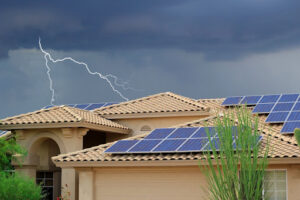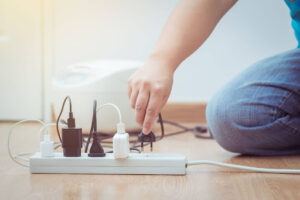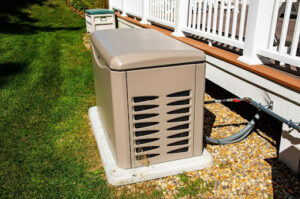
What to Do After Your House Is Struck by Lightning
Lightning strikes can be a terrifying experience for any homeowner. The powerful boom and bright flash are unmistakable, leaving you to wonder about the safety
This May is National Electrical Safety Month (NESM), an annual campaign established to encourage electrical safety in the home, school and workplace. Universal Home Experts are big proponents of electrical safety and are joining in the crusade to ensure the protection of our Houston neighbors. The Electrical Safety Foundation (ESFI), one of the major sponsors of NESM, is a comprehensive source for electrical safety. Every year they release numerous resources for communities, schools and organizations to use and distribute. One of their topics this year is the newest version of the National Electrical Code (NEC).
Updated every three years and adopted by all 50 states, the NEC is the standard for safe electrical practices. It acts as a guide for proper electrical installation, inspection and use to “protect people and property from avoidable electrical hazards.” Universal electricians stay on top of all the code revisions, which have been updated again this year. They inform all decisions on electrical repairs and installations – and electrical requirements for new builds and renovations. If you are a home or business owner, it is important to understand how the code works and how it impacts all aspects of an electrical system.
Facts About the NEC:
Download the complete ESFI National Electrical Safety Illustrated 2017.
Is your electrical system up to code? If it was built before 1974, it might need to be updated. Additionally, if your home hasn’t had an electrical inspection in the last five years, it should be assessed by a professional electrician. Call Universal Home Experts at (713) 364-0226 to schedule an electrical safety inspection today!

Lightning strikes can be a terrifying experience for any homeowner. The powerful boom and bright flash are unmistakable, leaving you to wonder about the safety

It’s easy to overlook the silent threats that lurk within the walls of your own home — especially when it comes to the electrical system.

In today’s world, where unpredictability seems to be the only constant, ensuring the reliability and safety of our homes has become paramount. Whether it’s due